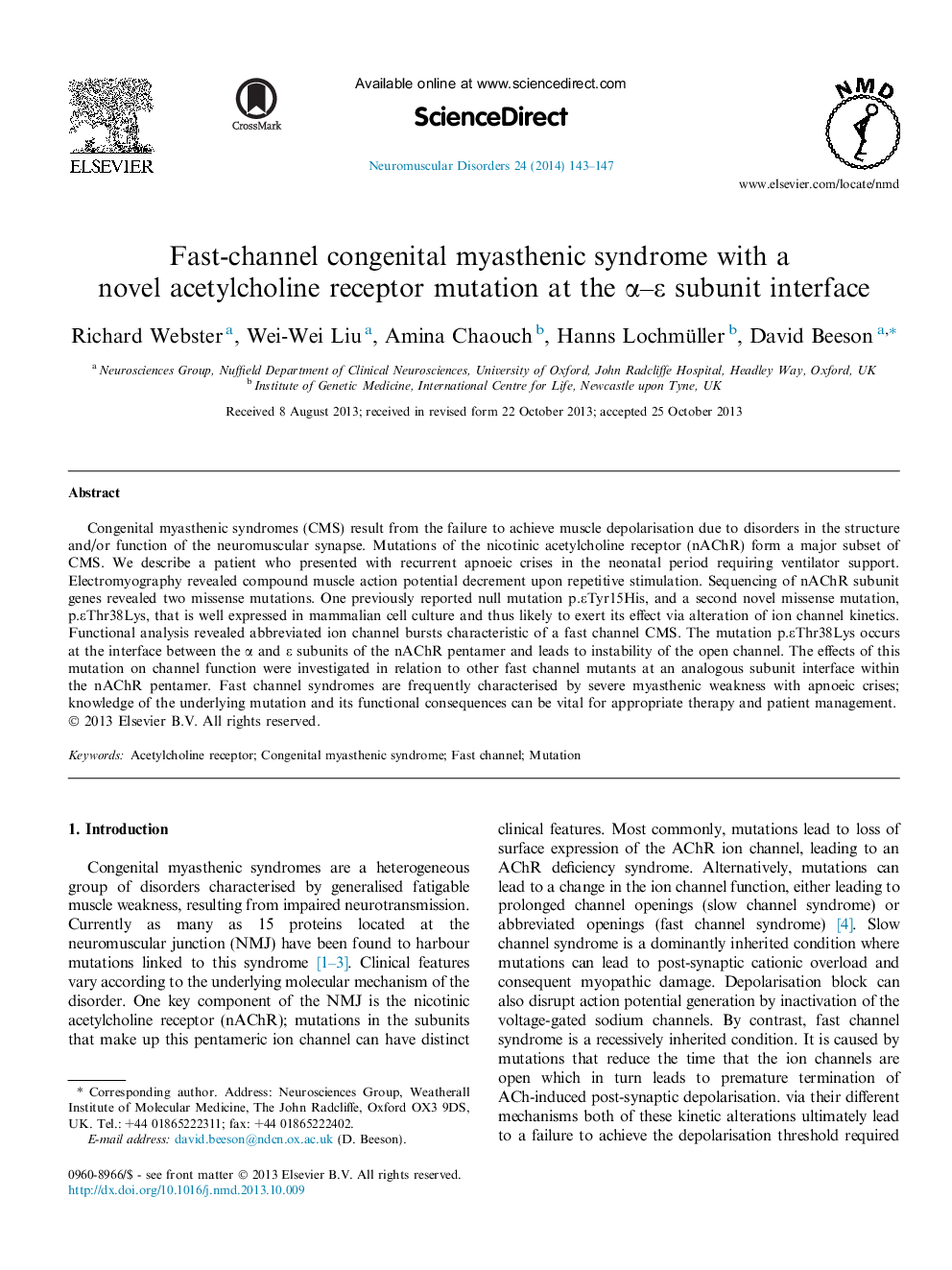| Article ID | Journal | Published Year | Pages | File Type |
|---|---|---|---|---|
| 6041612 | Neuromuscular Disorders | 2014 | 5 Pages |
Abstract
Congenital myasthenic syndromes (CMS) result from the failure to achieve muscle depolarisation due to disorders in the structure and/or function of the neuromuscular synapse. Mutations of the nicotinic acetylcholine receptor (nAChR) form a major subset of CMS. We describe a patient who presented with recurrent apnoeic crises in the neonatal period requiring ventilator support. Electromyography revealed compound muscle action potential decrement upon repetitive stimulation. Sequencing of nAChR subunit genes revealed two missense mutations. One previously reported null mutation p.εTyr15His, and a second novel missense mutation, p.εThr38Lys, that is well expressed in mammalian cell culture and thus likely to exert its effect via alteration of ion channel kinetics. Functional analysis revealed abbreviated ion channel bursts characteristic of a fast channel CMS. The mutation p.εThr38Lys occurs at the interface between the α and ε subunits of the nAChR pentamer and leads to instability of the open channel. The effects of this mutation on channel function were investigated in relation to other fast channel mutants at an analogous subunit interface within the nAChR pentamer. Fast channel syndromes are frequently characterised by severe myasthenic weakness with apnoeic crises; knowledge of the underlying mutation and its functional consequences can be vital for appropriate therapy and patient management.
Related Topics
Life Sciences
Neuroscience
Developmental Neuroscience
Authors
Richard Webster, Wei-Wei Liu, Amina Chaouch, Hanns Lochmüller, David Beeson,
